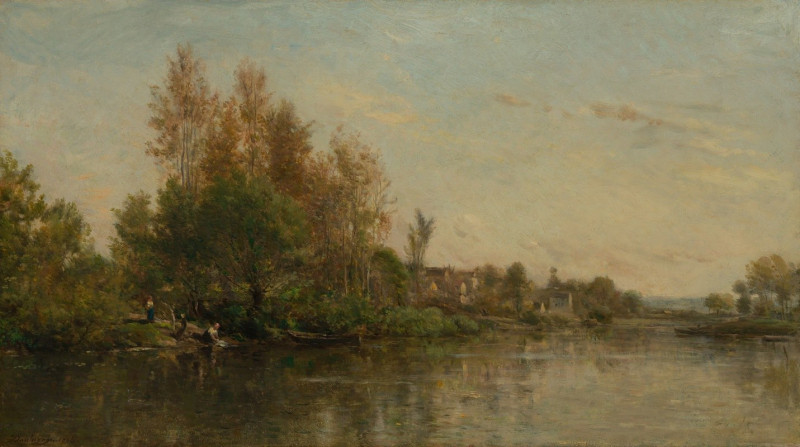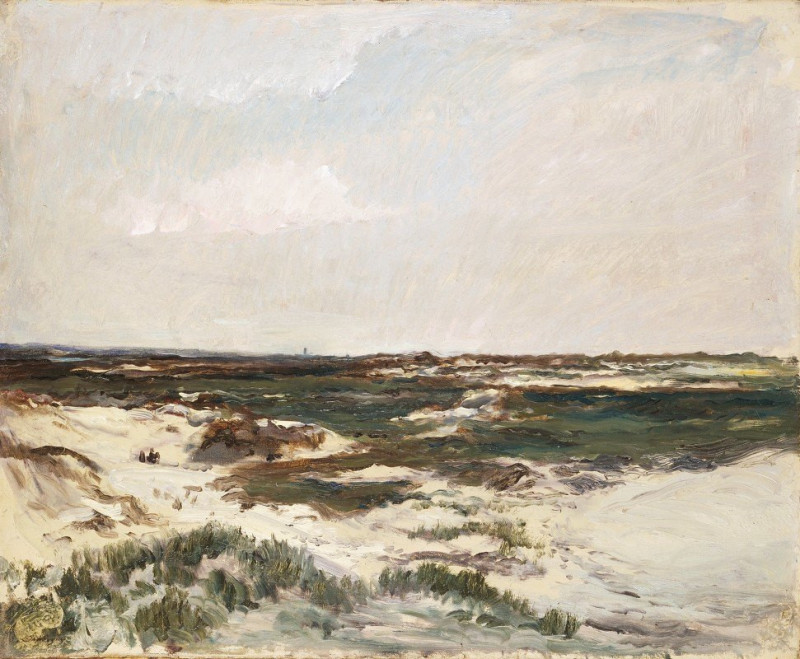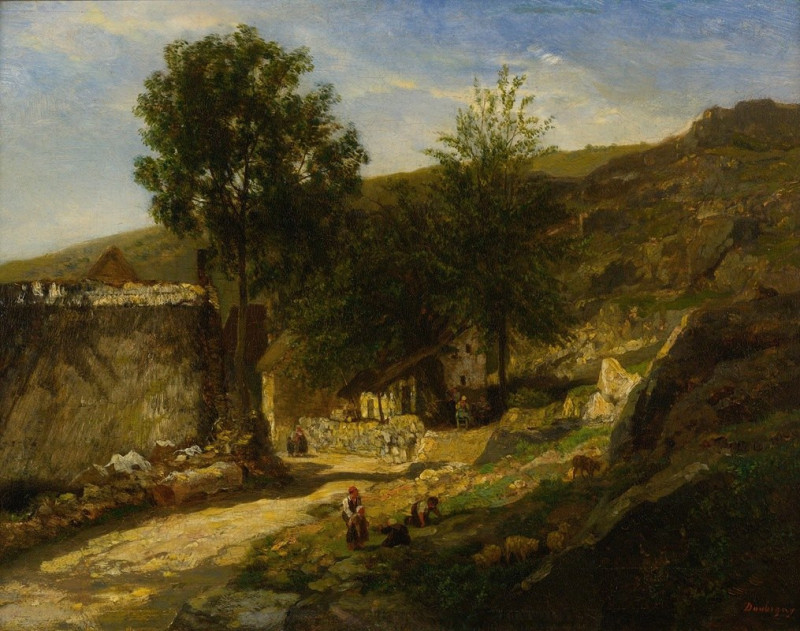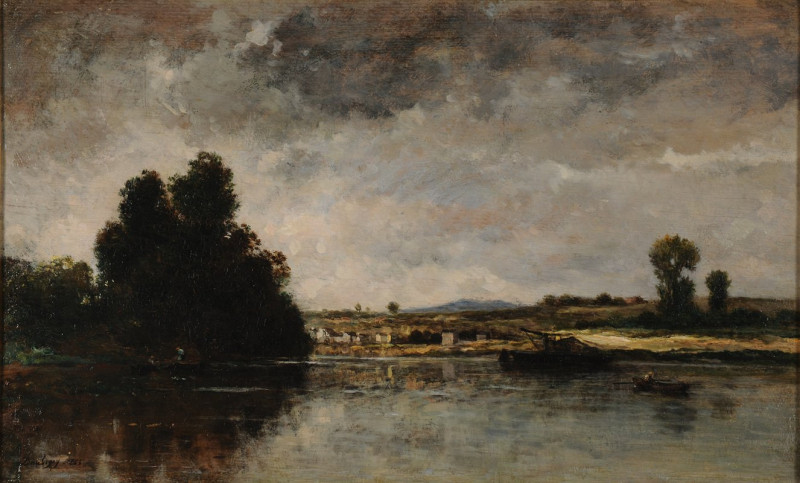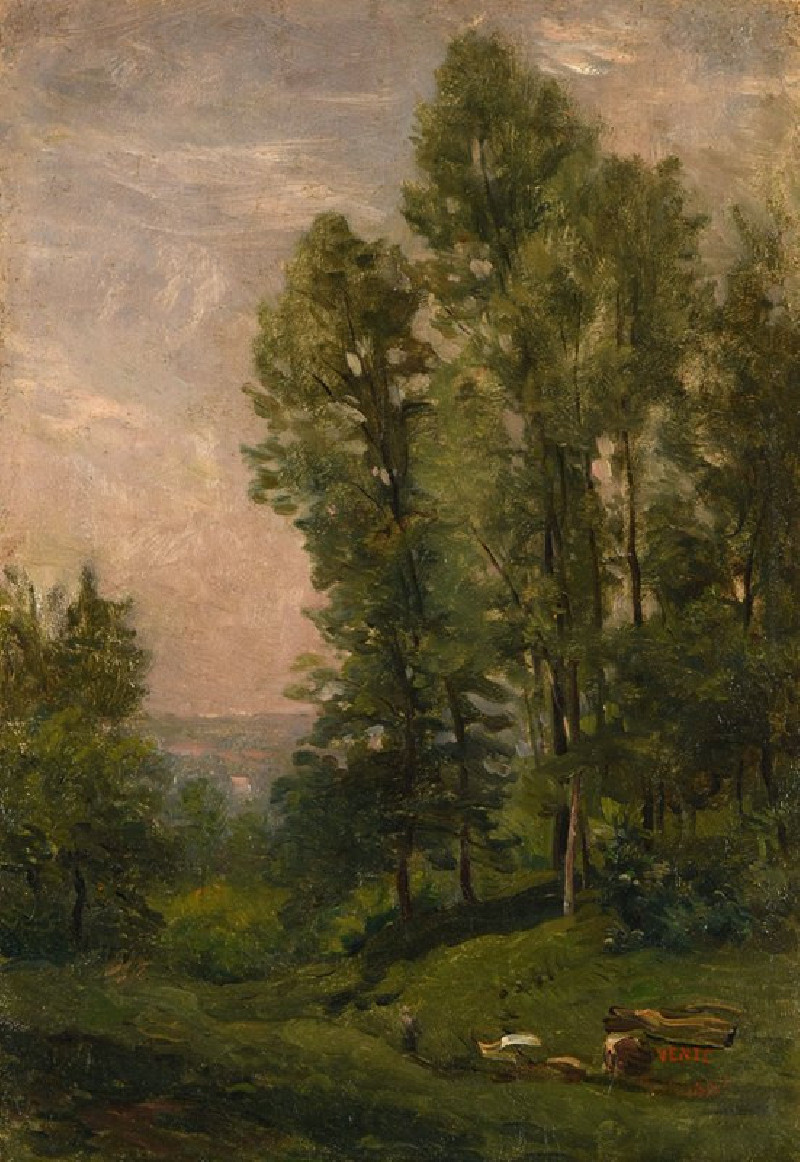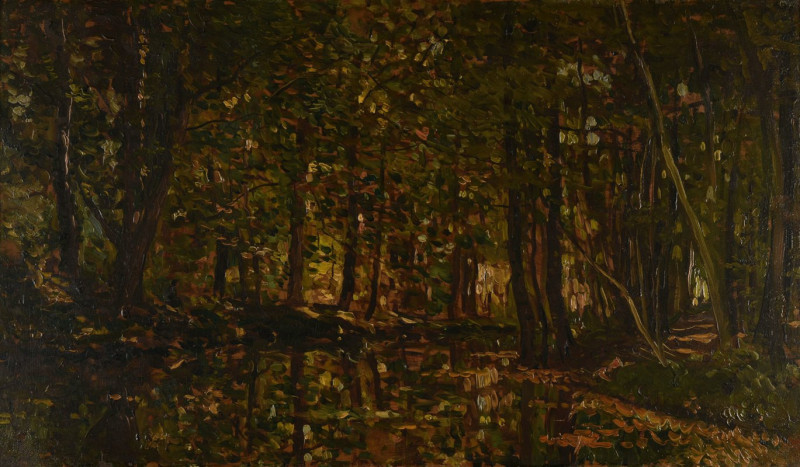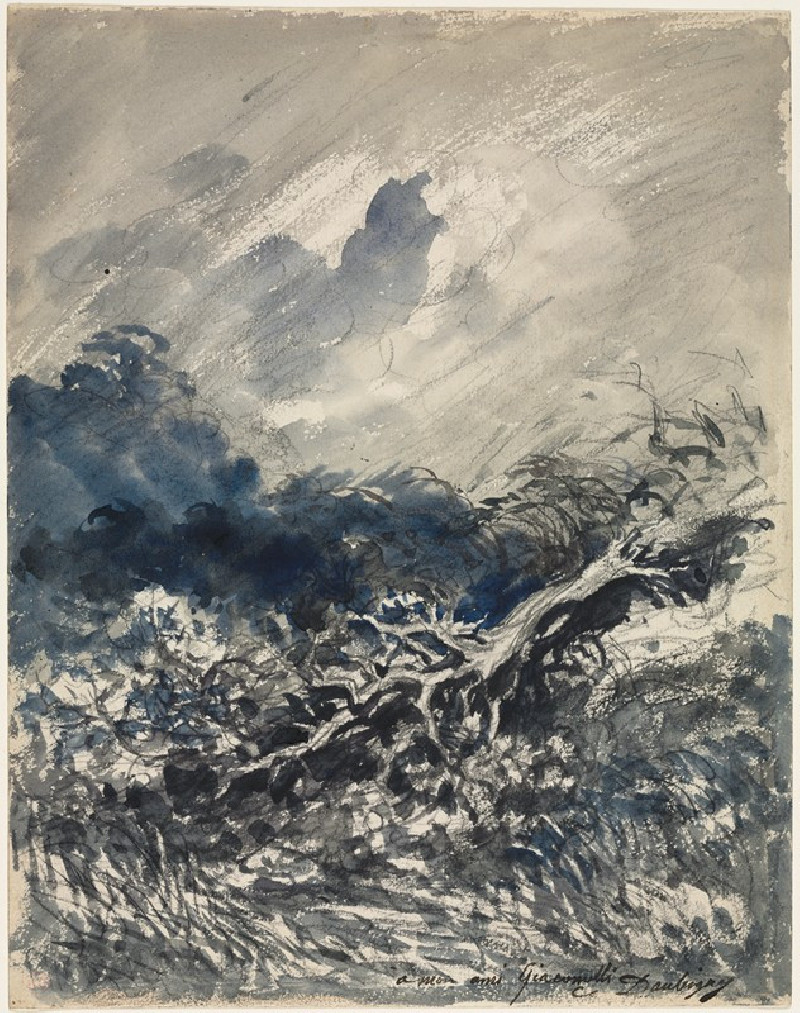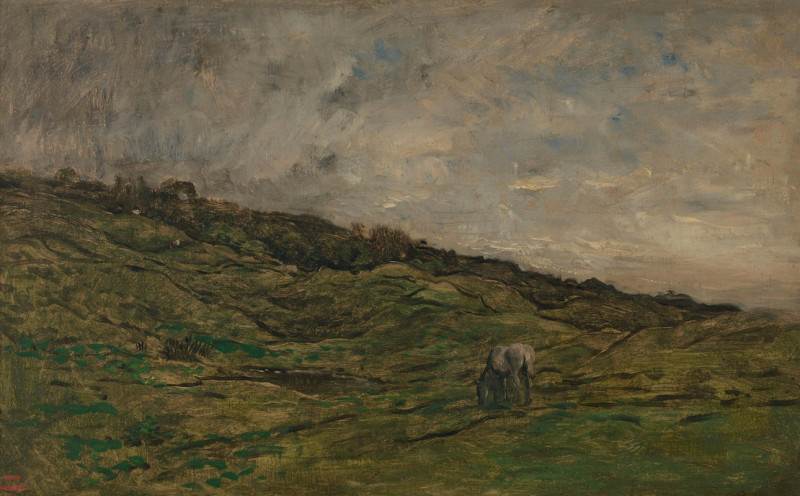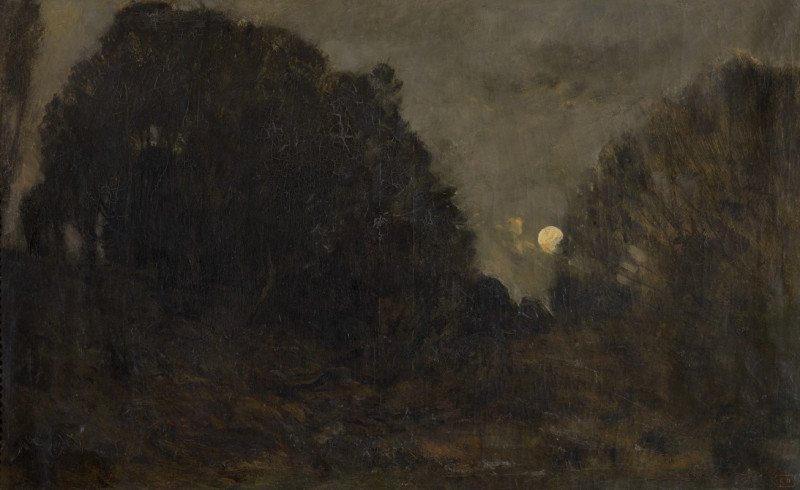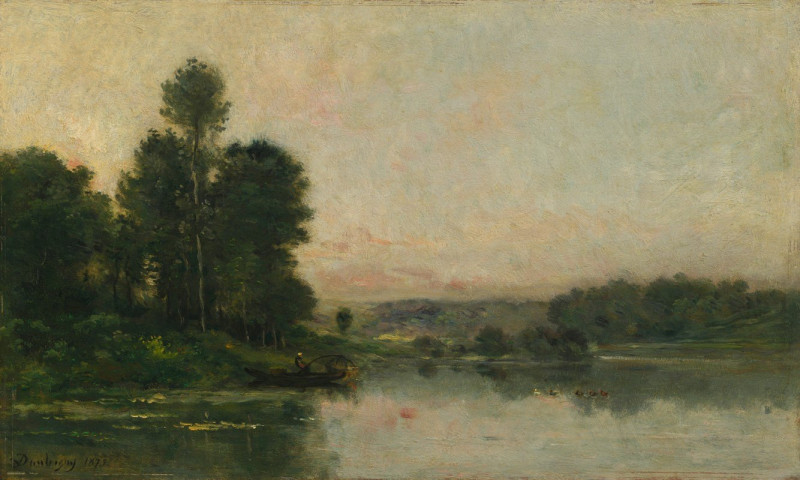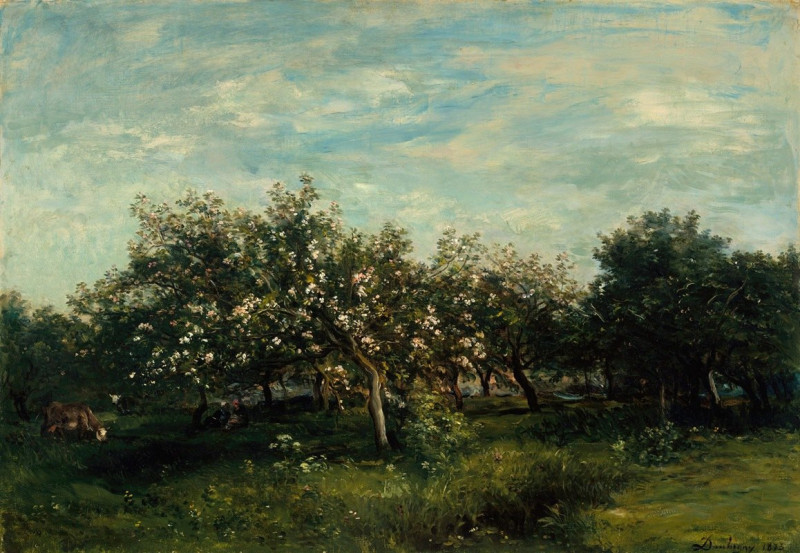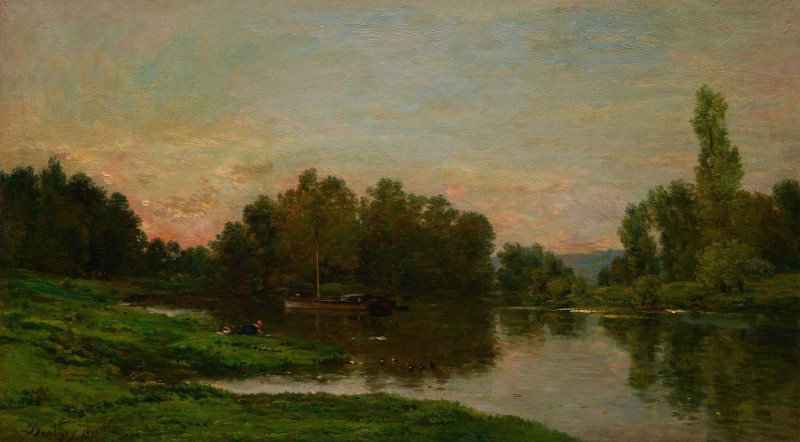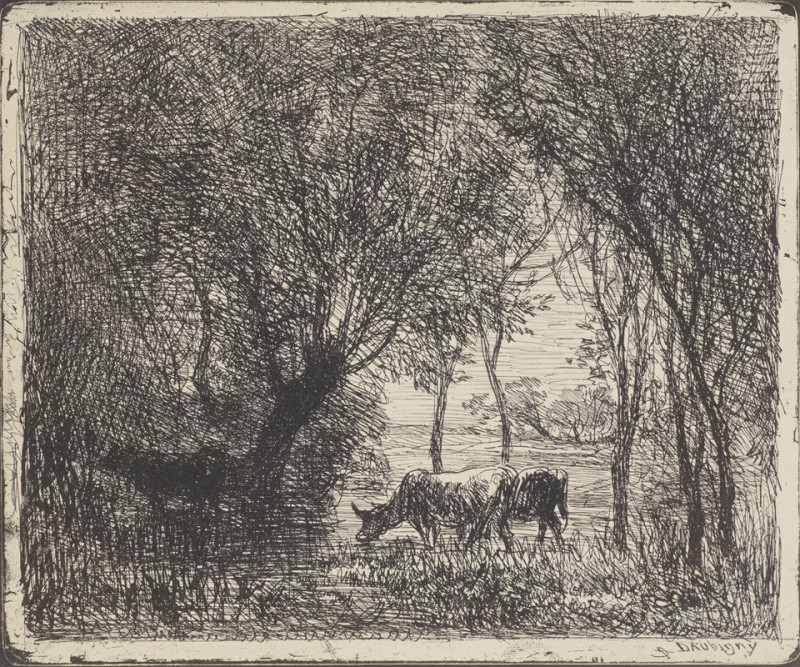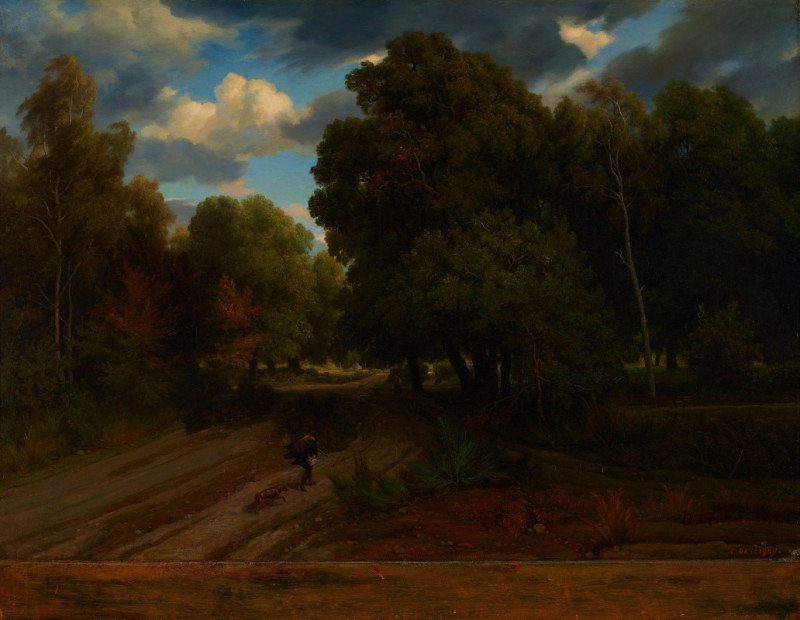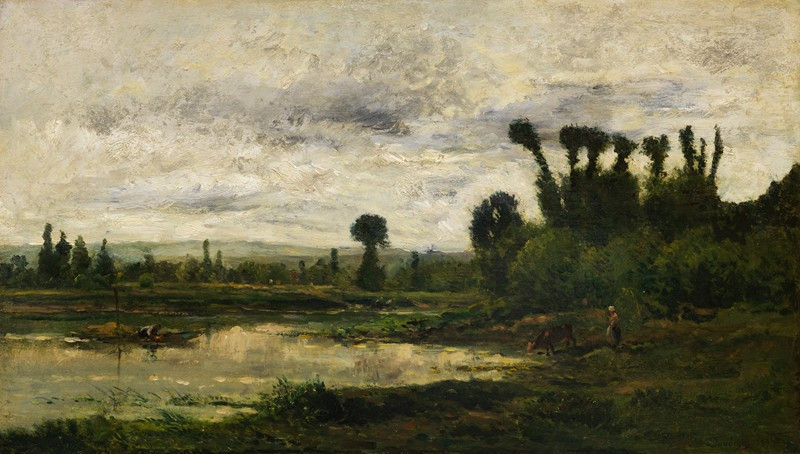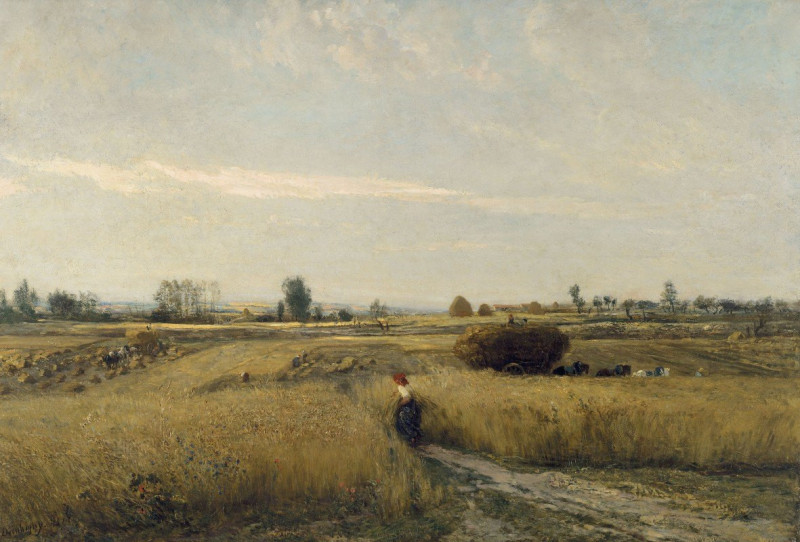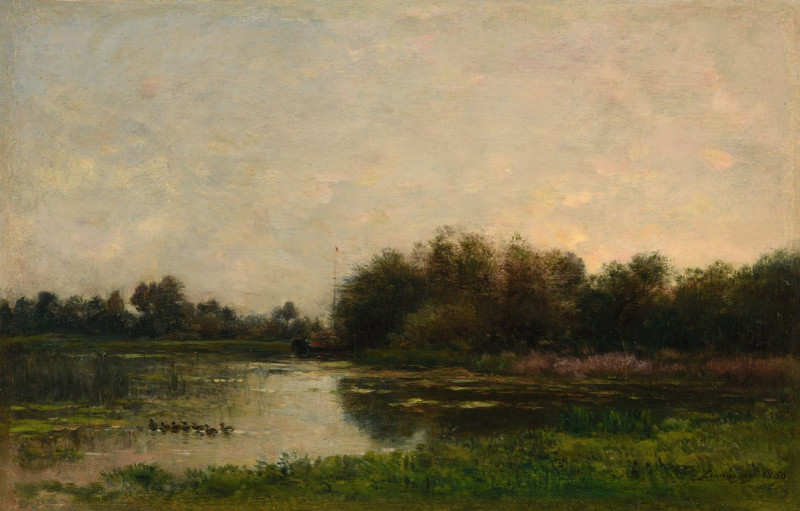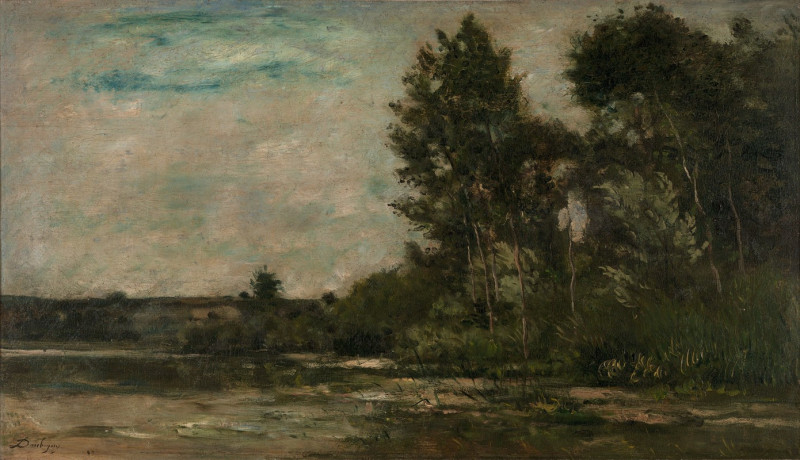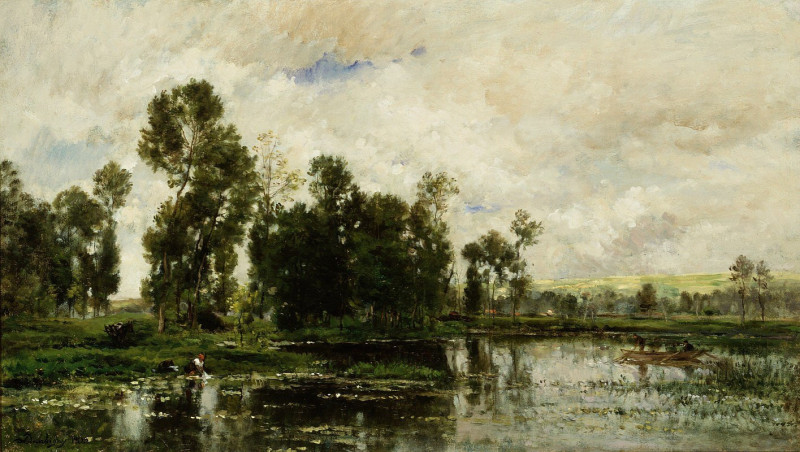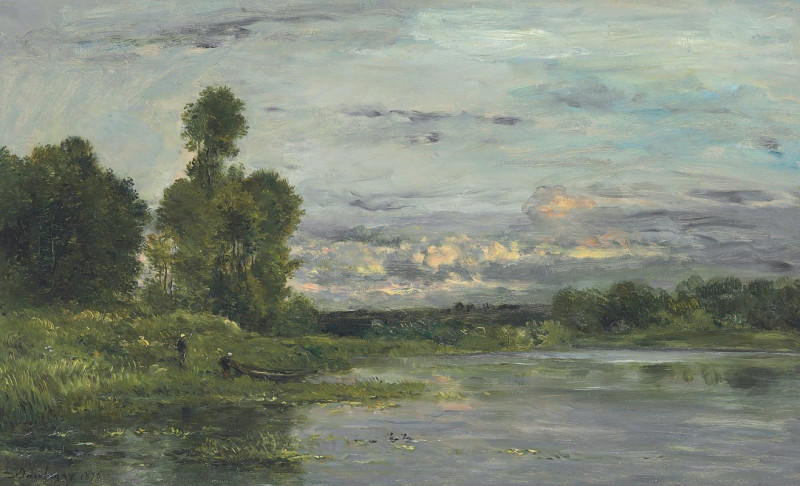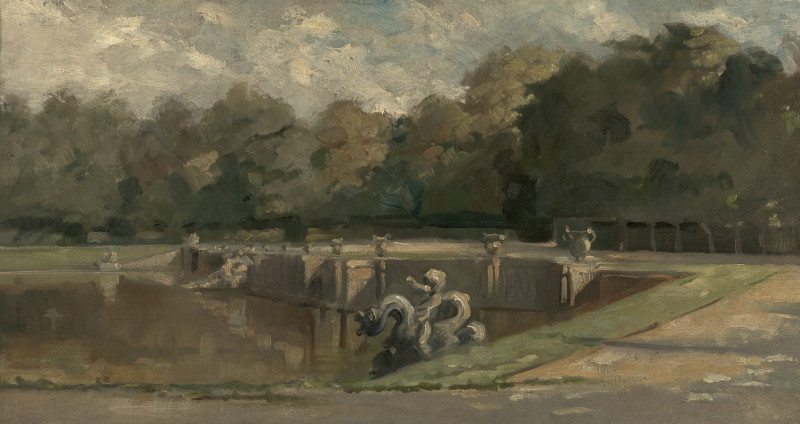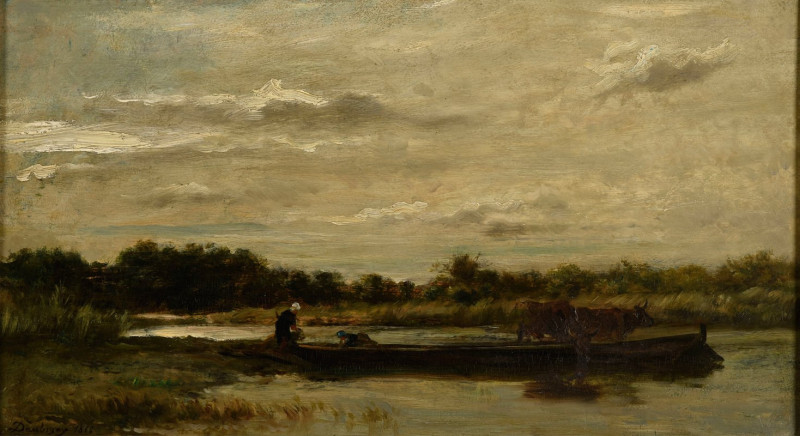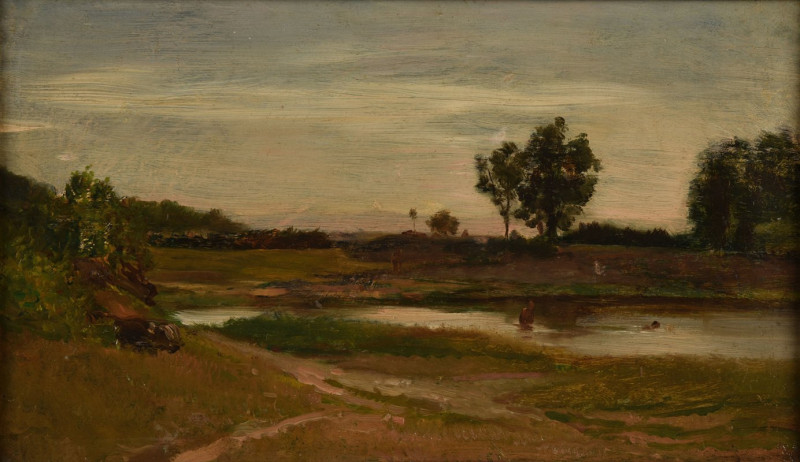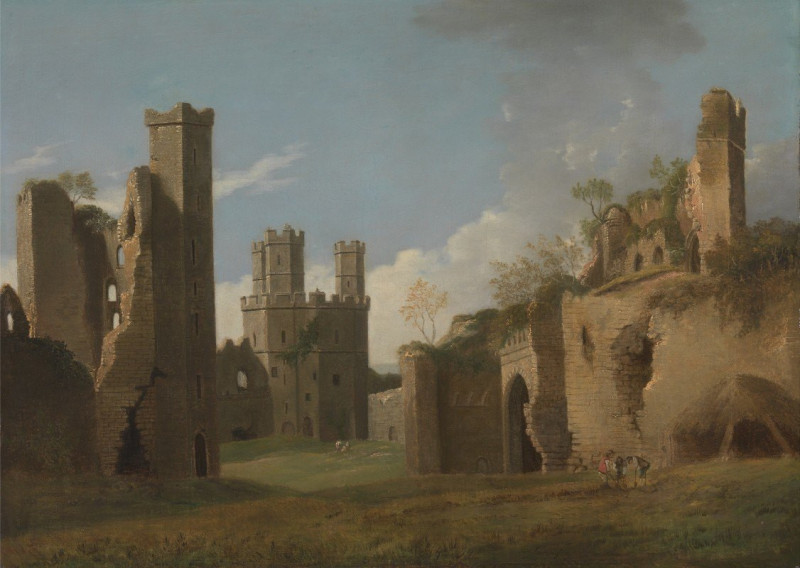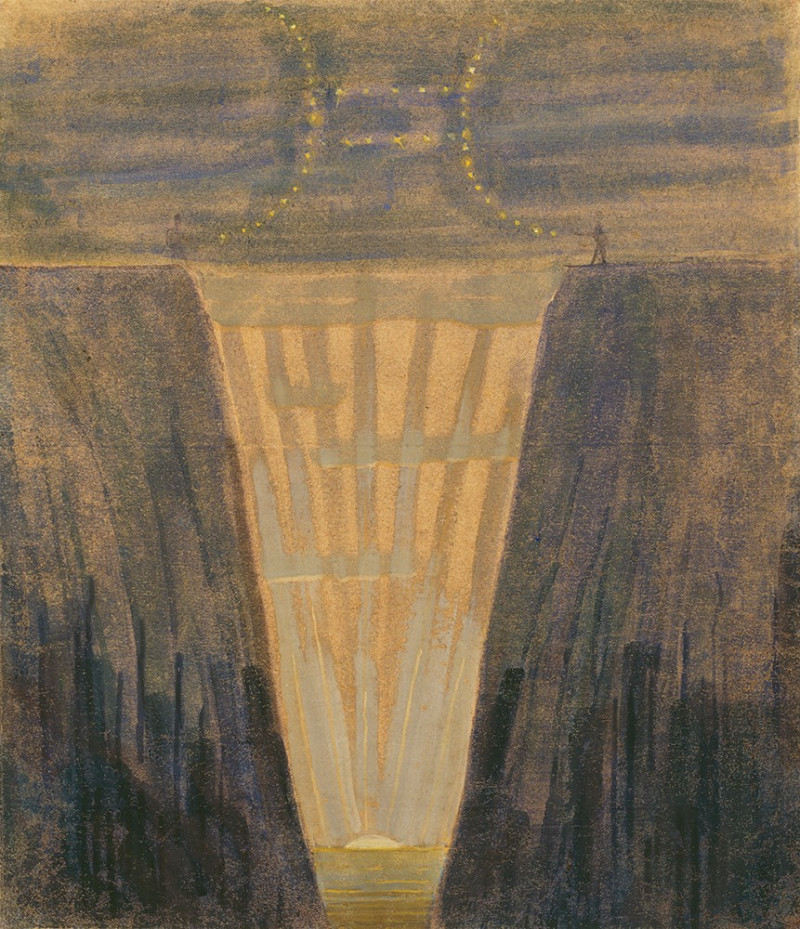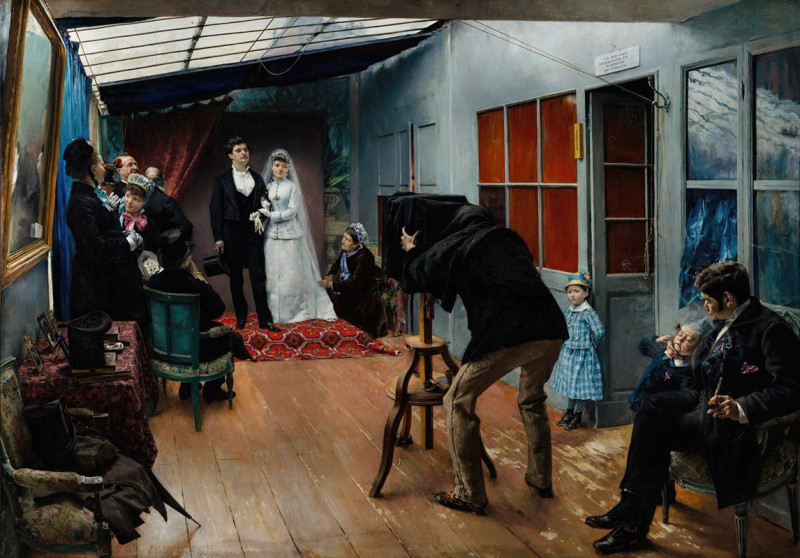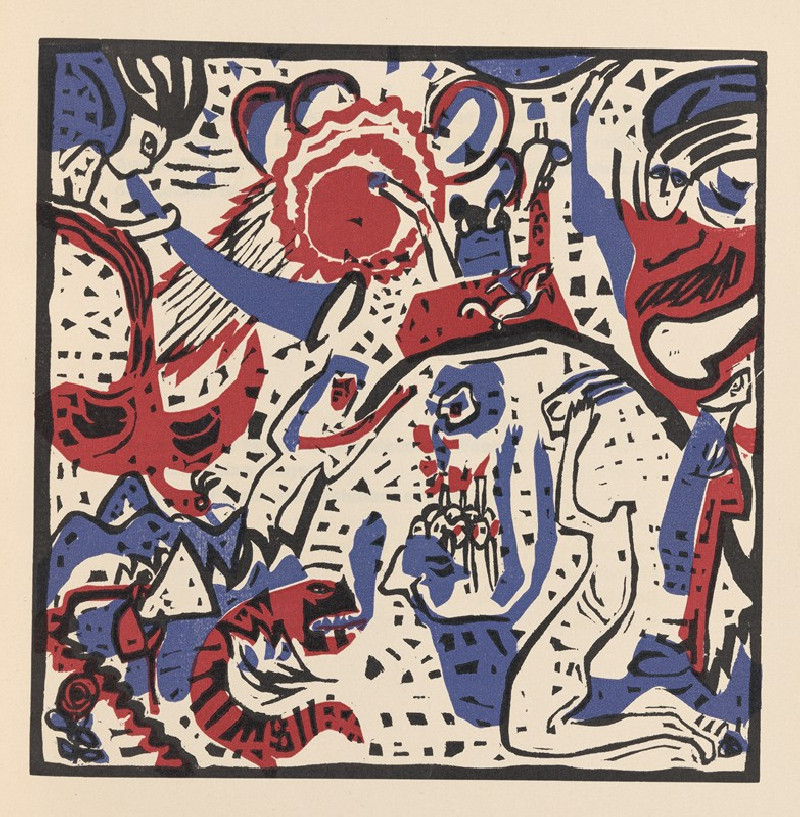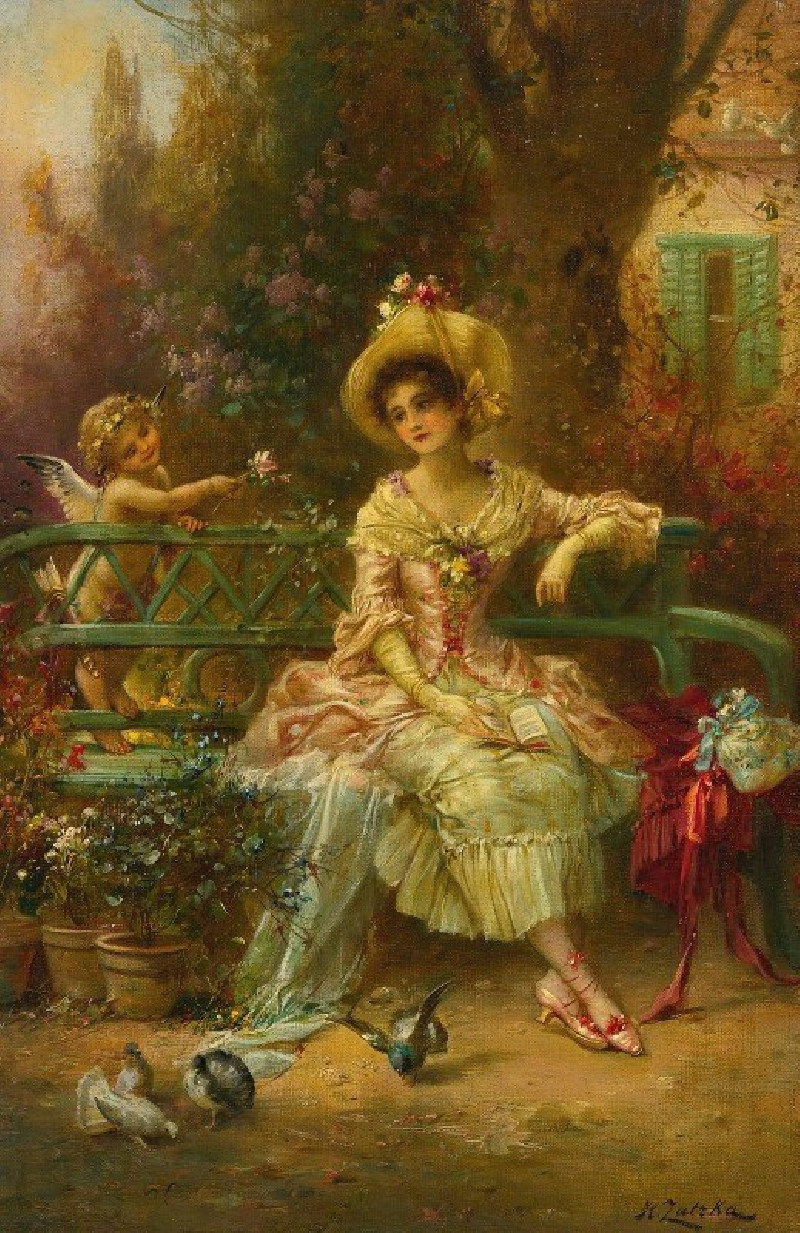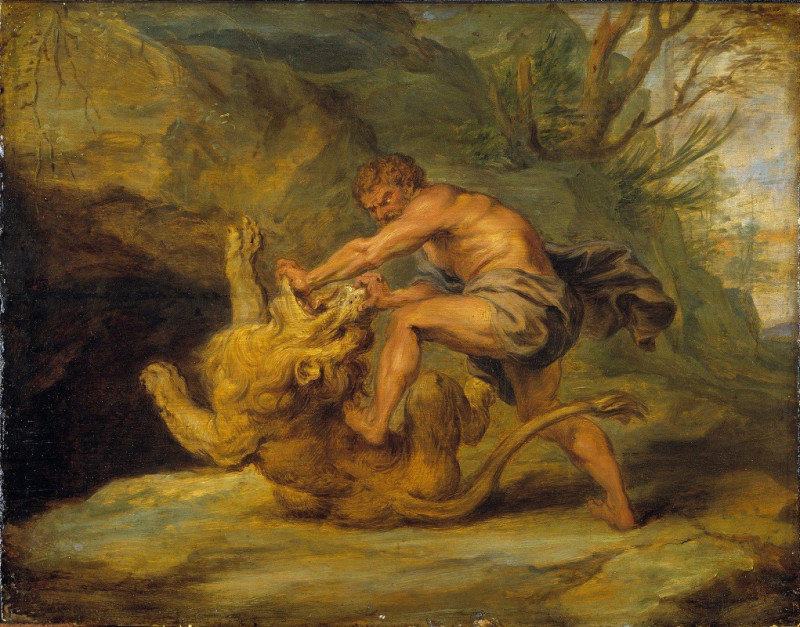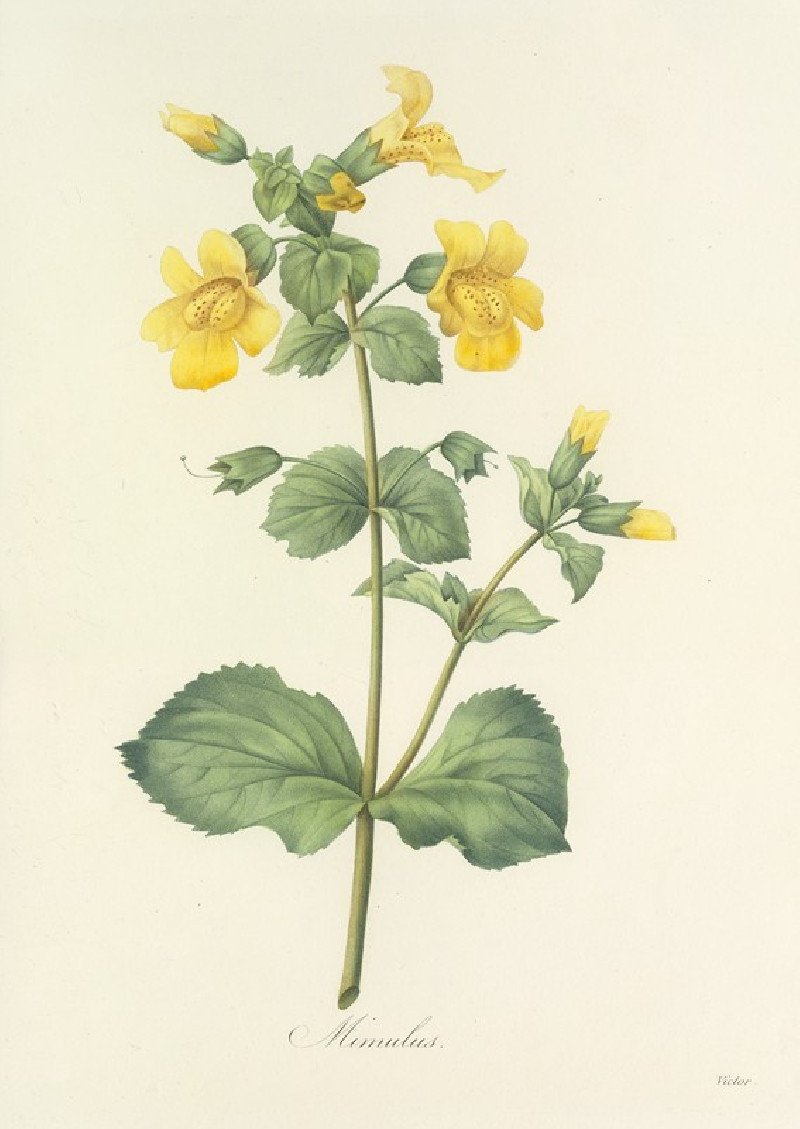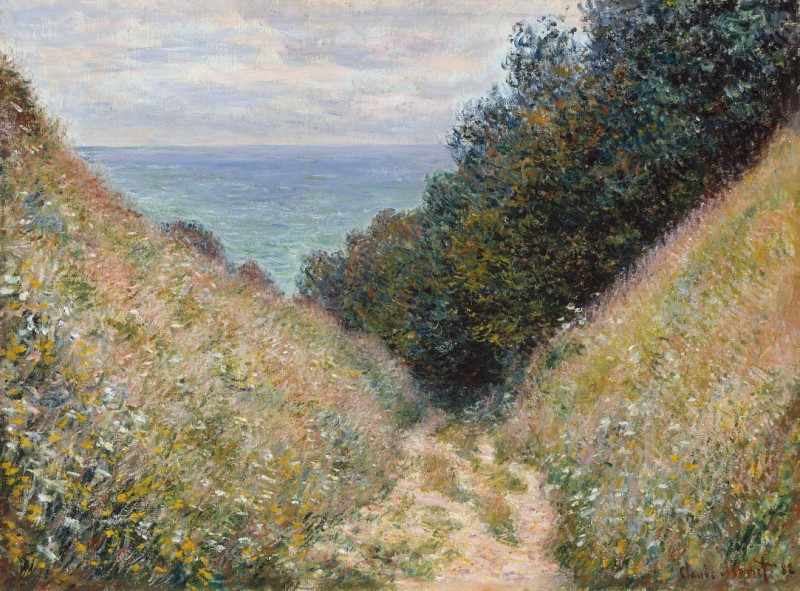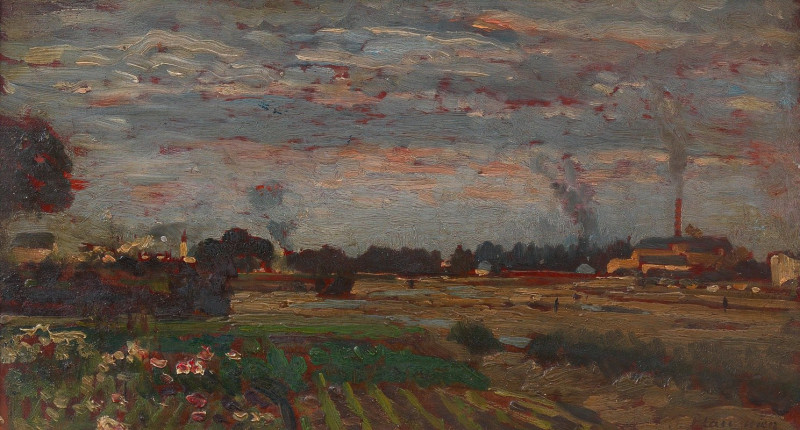The Banks of the Oise (1863)
Technique: Giclée quality print
Recommended by our customers
More about this artwork
We are delighted to present on our website one of the most captivating landscapes by Charles François Daubigny, a master of the Barbizon school known for his pivotal role in the development of plein air painting. "The Banks of the Oise" is not merely a depiction of a serene riverscape but also an exemplary showcase of Daubigny's profound connection with nature and his remarkable ability to translate it onto canvas.This painting captures a tranquil moment along the Oise River. The eye of the viewer is drawn into a peaceful expanse of water, reflecting the gentle sky and the lush greenery of the riverbanks. A subtle, almost hazy light bathes the scene, suggestive of either early morning or late afternoon, encapsulating a timeless quality and emphasizing the calm stillness of the locale.On the left bank, Daubigny skillfully paints a grouping of tall trees, their autumnal hues suggesting the change of seasons, a frequent theme in his works that evokes both the beauty and the ephemerality of nature. The trees frame a serene vignette where two figures, possibly local fisherfolk, are subtly integrated into the landscape, signifying the harmony between humans and nature.The horizon is dotted with the soft silhouettes of buildings—a gentle reminder of human presence, seamlessly integrated within the natural world. The delicate rendering of the sky, with its soft, diffuse clouds, further adds to the overall tranquility of the painting, inviting viewers to ponder or simply absorb the quiet beauty of the scene.
Delivery
Returns
Charles-François Daubigny (15 February 1817 – 19 February 1878) was a French painter, one of the members of the Barbizon school, and is considered an important precursor of impressionism.
He was also a prolific printmaker, mostly in etching but also as one of the main artists to use the cliché verre technique.

